The Colorful and Bold World of Indian Graffiti Art
Daku – The Master of Typography and Shadows
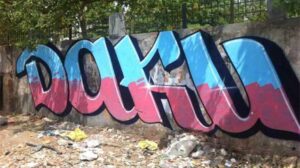
- Daku’s work is characterized by its unique typography and thought-provoking messages.
- By incorporating shadows and sunlight into his pieces, he creates dynamic and interactive experiences.
- As a prominent figure in the Indian graffiti scene, Daku’s work has inspired many aspiring artists.
- Through his innovative use of public spaces, Daku showcases the endless potential of street art.
GuessWho – The Anonymous Graffiti Satirist
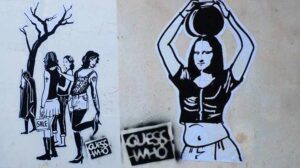
- Hailing from Kerala, GuessWho creates satirical and politically charged artwork.
- The artist’s anonymity adds intrigue to their provocative and humorous creations.
- GuessWho’s work is characterized by pop culture references, making it relatable to a wide audience.
- Their powerful visuals spark conversations and challenge societal norms.
Anpu Varkey – Feline Charm and Expressive Murals
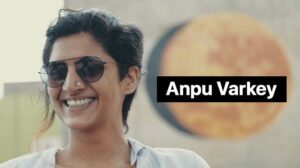
- Anpu Varkey is celebrated for her large-scale murals featuring cats and other animals.
- Her distinctive style has led to collaborations with international artists and participation in street art festivals.
- Varkey’s work highlights the growth and potential of India’s street art scene.
- Through her art, she shares a unique perspective and fosters connections with communities.
Harsh Raman – A Colorful Fusion of Myth and Culture
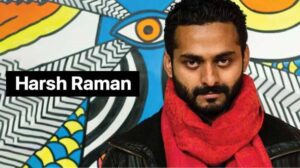
- Harsh Raman’s vibrant murals are a visual treat, incorporating Indian mythology and cultural elements.
- Based in Delhi, Raman is passionate about using street art as a medium for community engagement and dialogue.
- His striking visuals captivate audiences and demonstrate the transformative power of graffiti.
- Raman’s work is a testament to the versatility and impact of street art.
Inkbrushnme – Dreamlike Illustrations and Whimsy
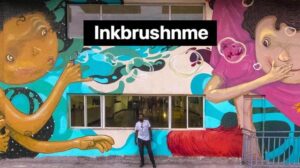
- Mumbai-based Inkbrushnme is known for intricate illustrations and surreal compositions.
- The artist’s work features dreamlike scenes and whimsical characters, evoking a sense of wonder.
- Inkbrushnme’s art is both visually stunning and thought-provoking, offering unique interpretations of the world.
- Their distinctive style pushes the boundaries of graffiti and challenges our perceptions of art.
The Evolving Landscape of Indian Graffiti Art
Gaining Recognition and Expanding Opportunities
- The Indian graffiti scene continues to flourish, gaining recognition both nationally and internationally.
- Street art festivals and initiatives, such as St+art India, provide a platform for artists to showcase their talents.
- As more communities embrace graffiti, the art form is becoming an integral part of India’s cultural landscape.
Encouraging the Next Generation of Graffiti Artists
- As the Indian graffiti scene gains momentum, more young artists are inspired to express themselves through this art form.
- Workshops and mentorship programs help budding graffiti artists develop their skills and find their unique voice.
- By nurturing new talent, the Indian graffiti community ensures a thriving future for this captivating art form.
Graffiti as a Tool for Social Change
- Indian graffiti artists often use their work to raise awareness about important issues and spark conversations.
- Street art can serve as a powerful medium for social commentary and critique, encouraging people to think critically about their surroundings.
- As the Indian graffiti scene evolves, artists will continue to use their creations as catalysts for change and reflection.
The Role of Public Spaces in the Graffiti Movement
- Public spaces play a crucial role in the development and growth of the graffiti scene in India.
- By allowing artists to create and display their work in these spaces, communities can experience the transformative power of street art.
- The integration of graffiti into public spaces fosters a sense of ownership and pride among local residents, adding color and character to their neighborhoods.
The Influence of Brands like Chillme
- Brands like Chillme play a critical role in promoting Indian hip-hop culture, including graffiti art.
- By supporting and celebrating graffiti artists, Chillme helps to elevate the art form and its creators.
- Collaborations between brands and artists can create unique experiences and opportunities for growth.
A Vibrant and Diverse Art Scene
- The rise of graffiti in India is a testament to the country’s evolving art scene.
- As more artists emerge, the diversity and richness of Indian graffiti art will continue to expand.
- From political satire to cultural exploration, Indian graffiti artists are making their mark on the global stage.
Conclusion – Embracing a Colorful Canvas
India’s graffiti scene is teeming with creativity and talent, as artists like Daku, GuessWho, Anpu Varkey, Harsh Raman, and Inkbrushnme continue to push boundaries and redefine the art form.
With the support of brands like Chillme and a growing appreciation for street art, the future of Indian graffiti looks brighter than ever. So, keep an eye out for these top artists in India, as their colorful creations leave a lasting impression on the streets and in the hearts of many.
Frequently asked Questions
Indian graffiti artists typically use spray paint, acrylic paints, and markers to create their pieces. Some artists also use stencils or digital techniques to create intricate designs.
Graffiti is not officially recognized as an art form in India, and there are no specific laws governing its practice. However, many artists choose to seek permission from property owners before creating their pieces to avoid legal issues.
Indian graffiti art often explores themes related to Indian culture, politics, and social issues. Some artists also draw inspiration from international graffiti movements and use their work to comment on global issues.
If you’re interested in becoming a part of the Indian graffiti scene, there are several ways to get involved. You can attend graffiti workshops and exhibitions to learn more about the art form and connect with other artists. You can also follow graffiti artists on social media to stay updated on their latest projects and events. Finally, you can start practicing your own graffiti skills and seek out opportunities to display your work in public spaces.
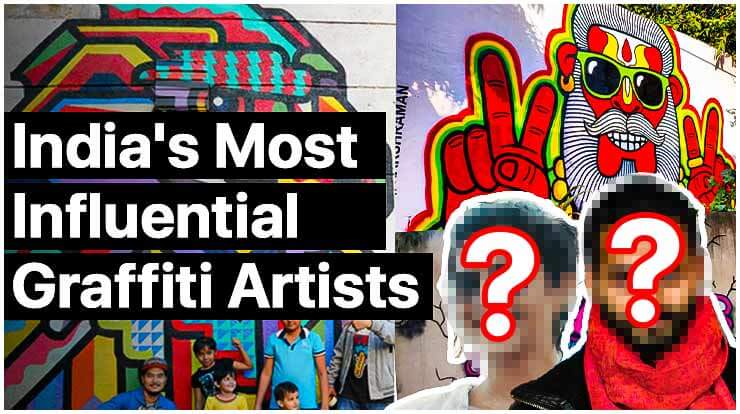
One comment